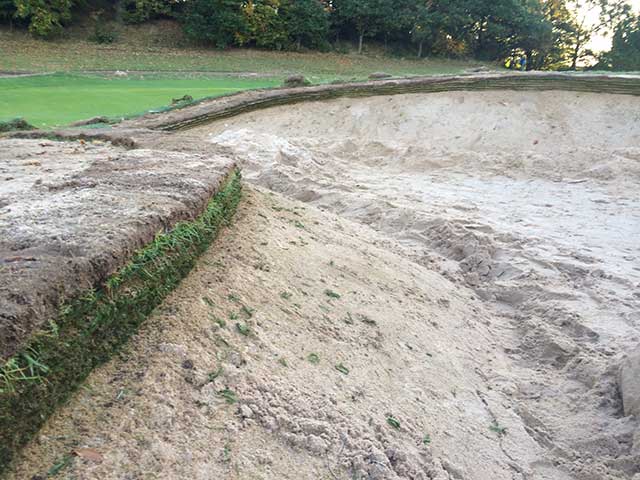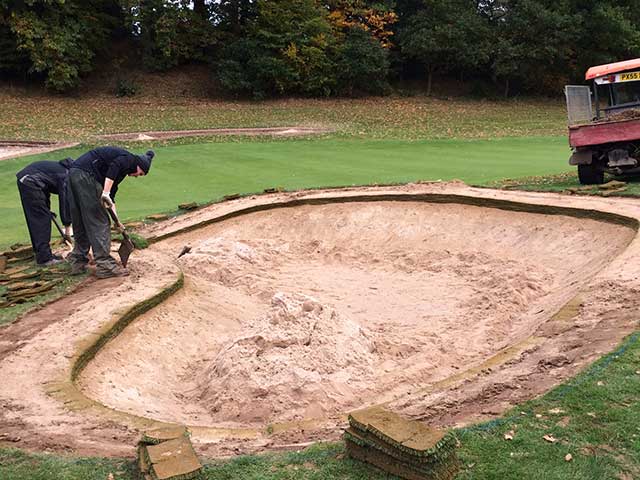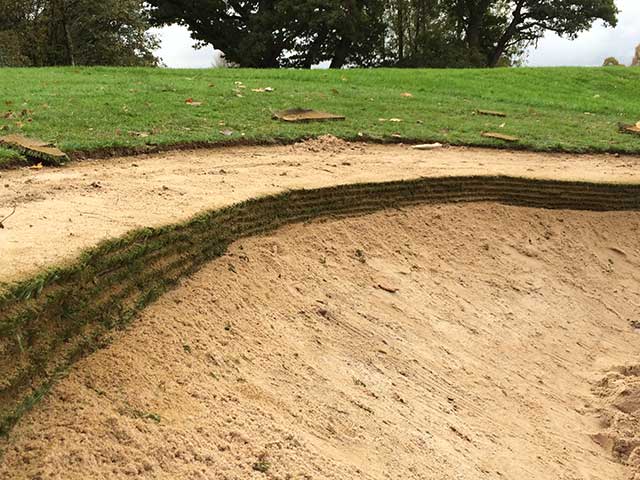Bunker sand is a precious commodity. However, it can get contaminated very quickly, by silt, stones or a combination of both, ruining drainage characteristics, creating inconsistent playing conditions and spoiling aesthetics.
How can this be avoided, or at least, how can the serviceable life of this expensive material be extended? We believe that ‘fully sealed’ bunkers are often the answer. What do we mean by this? Bunkers which have a base liner, under the sand, connected to our ecobunker edge around the perimeter, effectively creating a ‘tank’. Is this strictly necessary?
Over the past 20 years there has been a lot of research into to undersand liners , and the result is a myriad of options, which can be confusing, even for the most experienced course managers. However until our invention of the synthetic turf edge came along, not much attention had been given to edge erosion and sand contamination from this source. Now that more focus had been directed at this area, I think the golfing world is realising that there are considerable benefits in ‘tanked’ or ‘sealed’ bunkers.
Our edges are fully compatible with all liner types. We have built on numerous courses combining with Blinder, Capillary Concrete, Tarmac Topsport, Sandtrapper, Bunkermat, Terram and of course recycled astroturf which was the brainchild of our own Steve Summerton.
The photos above show our edging in combination with Capillary Concrete at Dumfries County GC, and further photos show our edging with a range of other liners.



